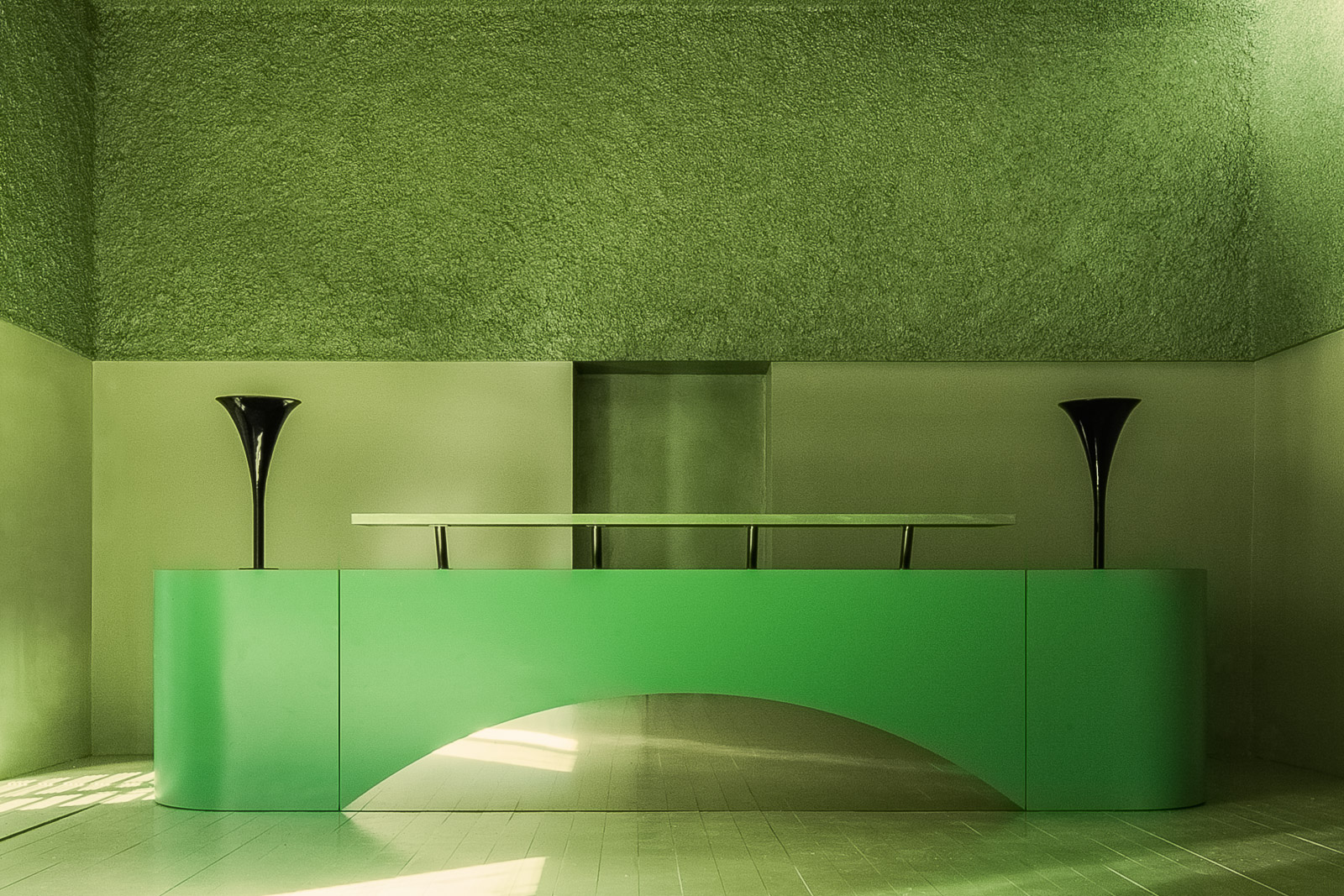
Review
Jeanette Kunsmann
Last summer, Richard Wagner and Andrea Palladio symbolically met in Rome—a grand meeting of giants and the conceptual reference for this gallery renovation. Architect Antonino Cardillo named his interior design project of an art gallery in the Roman district of San Lorenzo Crepuscular Green, a “greenish twilight”, inspired by the four operatic dramas from Rheingold to Twilight of the Gods. But how does Wagner’s Ring of the Nibelung fit with the work of the Renaissance architect? It is about more than just the gold-green colour on the walls. It is a drama in one act (space)—and in the centre, the horizon floats peacefully.
When the Rheingold glows in the depths of the Rhine at dawn, it makes the entire reef sparkle. This scene opens Richard Wagner’s opera as part of the Ring of the Nibelung. The Italian architect Antonino Cardillo was inspired by this natural spectacle, which shows the world in its natural order. The Rhine daughters, Wellgunde, Woglinde, and Floßhilde, guard the gold, which only one who curses love can forge into a ring that gives him power over the whole world. Rheingold is the perfect prelude to a three-day stage drama.
From Bayreuth to Rome. “I am not familiar with Photoshop”, says the Sicilian architect Antonino Cardillo. “I have studied Palladio, John Soane, and Karl Friedrich Schinkel.” Cardillo also stages his spaces with light and shadow. Like Andrea Palladio, he references antiquity and works with a classical, clear, and comprehensible formal language. Prior to the gallery renovation, there was the project ‘Seven Houses for No One’, with which, at the age of 32, he could digitally explore the dimensions of light and shadow. His visualizations looked astonishingly real, for which the media branded him a “baron of lies” in 2013.
With the halls of the House of Dust apartment and the Crepuscular Green gallery, Italian architect Antonino Cardillo explores the archaic domus (type) of the cave. Although it is dark, the walls shine. While House of Dust is mainly grey-pink pastel, the gallery is entirely green tone-on-tone. Referencing the “Greenish Twilight”, Cardillo thus composes the “greenish-cave-like depths of the Rhine—home to primordial beauty and the place where love was cursed.”
Much like House of Dust, Cardillo divides the space horizontally into two symmetrical halves: an upper and a lower, with the horizon floating peacefully in between, or is it the Rhine? Gallerist and patron Klaus Mondrian will display his photographic art on a thick layer of coarse plaster, which appears like accumulated old dust. The lower part of the walls is smoothly plastered in a light green that merges with the floor, while the ceiling and upper walls shimmer with a golden tone. Light below, dark above: this inversion creates not only a dramatic tension but also a sensual, mystical atmosphere. With its rather modest 40 square metres, Cardillo has transformed the gallery into a sacred space, providing a bold contrast to the eternal White Cube.
Antonino Cardillo plays with familiar classical forms. The conversion of the former counter into a symmetrical altar resembles a postmodern temple gable. The mint green furniture stands out in the clear space. In the semi-arched mirror, the floor is reflected, and trumpet-shaped table lamps diffuse light upwards towards the ceiling. Crepuscular Green is a sacred cave, a space for art. The Mondrian Suite Gallery becomes the “home of primordial beauty”, a “place where love was cursed”.

Antonino Cardillo, Crepuscular Green, Rome, 2014. Photography: Antonino Cardillo